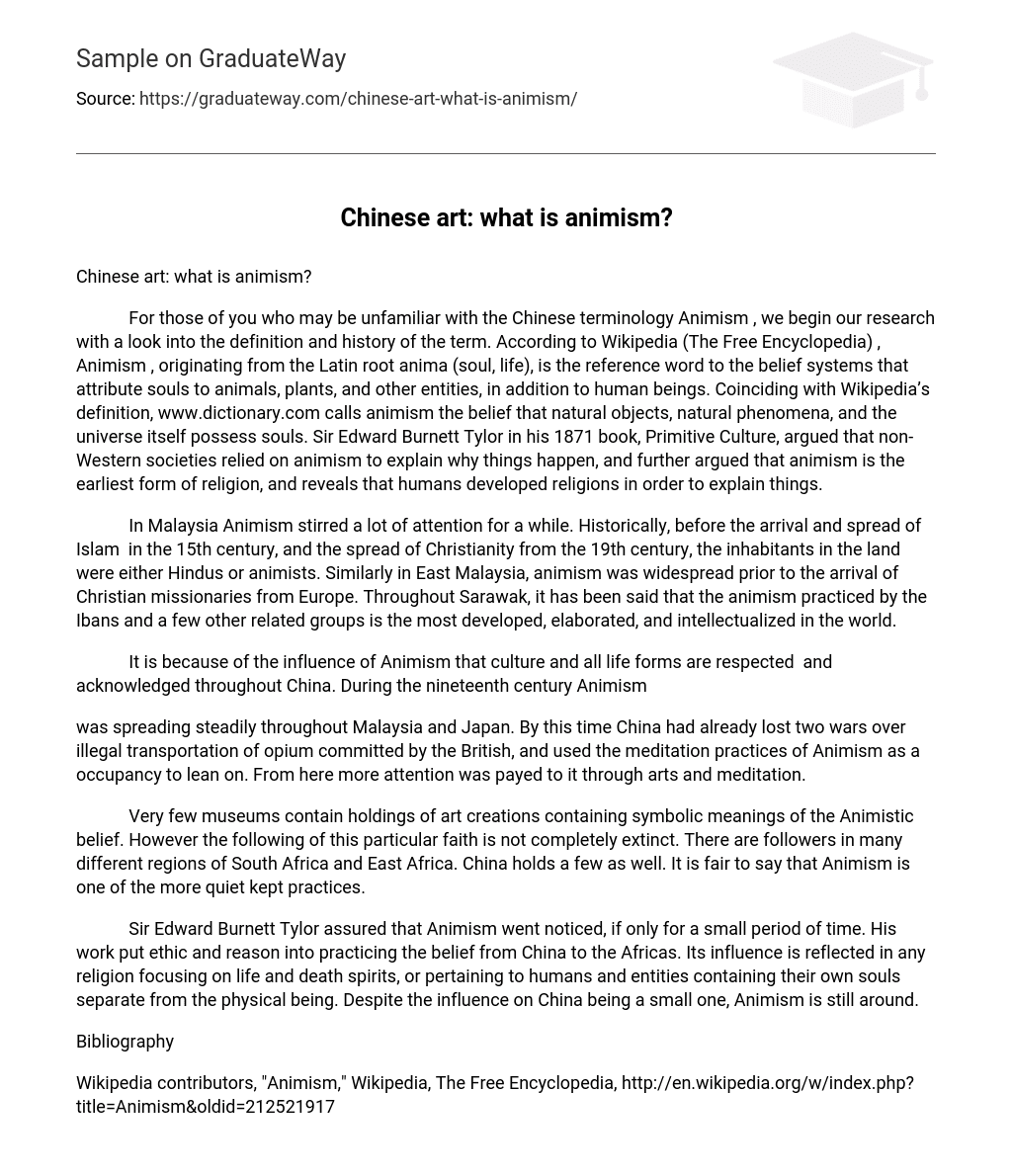For those of you who may be unfamiliar with the Chinese terminology Animism , we begin our research with a look into the definition and history of the term. According to Wikipedia (The Free Encyclopedia) , Animism , originating from the Latin root anima (soul, life), is the reference word to the belief systems that attribute souls to animals, plants, and other entities, in addition to human beings. Coinciding with Wikipedia’s definition, www.dictionary.com calls animism the belief that natural objects, natural phenomena, and the universe itself possess souls. Sir Edward Burnett Tylor in his 1871 book, Primitive Culture, argued that non-Western societies relied on animism to explain why things happen, and further argued that animism is the earliest form of religion, and reveals that humans developed religions in order to explain things.
In Malaysia Animism stirred a lot of attention for a while. Historically, before the arrival and spread of Islam in the 15th century, and the spread of Christianity from the 19th century, the inhabitants in the land were either Hindus or animists. Similarly in East Malaysia, animism was widespread prior to the arrival of Christian missionaries from Europe. Throughout Sarawak, it has been said that the animism practiced by the Ibans and a few other related groups is the most developed, elaborated, and intellectualized in the world.
It is because of the influence of Animism that culture and all life forms are respected and acknowledged throughout China. During the nineteenth century Animism
was spreading steadily throughout Malaysia and Japan. By this time China had already lost two wars over illegal transportation of opium committed by the British, and used the meditation practices of Animism as a occupancy to lean on. From here more attention was payed to it through arts and meditation.
Very few museums contain holdings of art creations containing symbolic meanings of the Animistic belief. However the following of this particular faith is not completely extinct. There are followers in many different regions of South Africa and East Africa. China holds a few as well. It is fair to say that Animism is one of the more quiet kept practices.
Sir Edward Burnett Tylor assured that Animism went noticed, if only for a small period of time. His work put ethic and reason into practicing the belief from China to the Africas. Its influence is reflected in any religion focusing on life and death spirits, or pertaining to humans and entities containing their own souls separate from the physical being. Despite the influence on China being a small one, Animism is still around.
Bibliography
Wikipedia contributors, “Animism,” Wikipedia, The Free Encyclopedia, http://en.wikipedia.org/w/index.php?title=Animism&oldid=212521917 (accessed May 21, 2008).
Wikipedia contributors, “Animism in Malaysia,” Wikipedia, The Free Encyclopedia, http://en.wikipedia.org/w/index.php?title=Animism_in_Malaysia&oldid=202735178
(accessed May 21, 2008).
Sir Edward Burnett Tylor. Primitive Culture.1871 (accessed May 21 2008)





